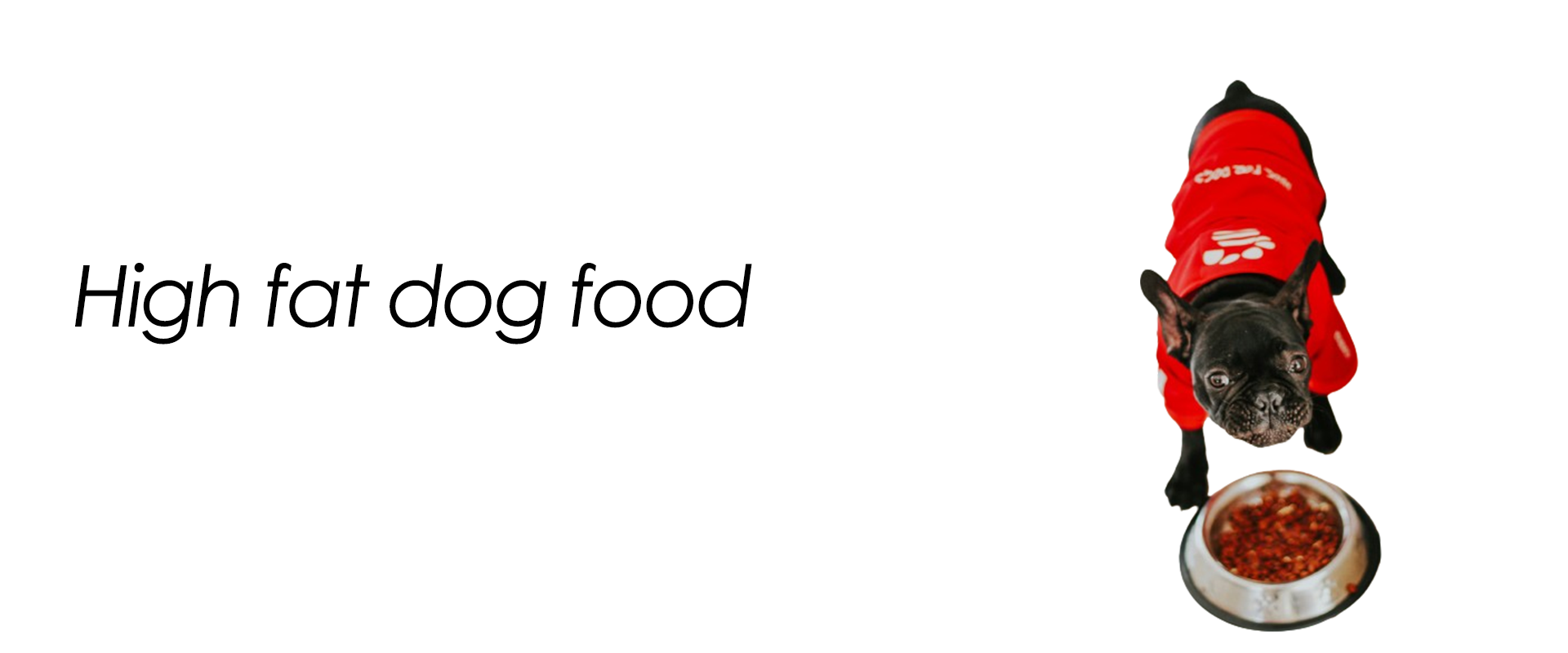Introduction
Introduce the concept of high-fat dog food, highlighting its role in providing concentrated energy and essential nutrients to support various aspects of canine health and well-being. Discuss the increasing popularity of high-fat diets among dog owners and the reasons behind its adoption.
What is High Fat Dog Food?
Definition and Purpose
High-fat dog food refers to formulations that contain elevated levels of fat compared to standard dog diets. The primary purpose of high-fat food is to provide dogs with increased energy density, essential fatty acids, and nutrients crucial for maintaining health and supporting specific dietary needs.
Types of High Fat Dog Food
There are several types of high-fat dog food available on the market:
- Dry Kibble: Convenient and commonly available, dry kibble formulations often include higher fat content options suitable for active dogs or those needing extra calories.
- Canned Food: Wet or canned dog food can also offer higher fat content, providing a different texture and moisture for dogs preferring this type of diet.
- Raw Diets: Raw diets or BARF (Biologically Appropriate Raw Food) often allow for precise control over fat content and can be tailored to meet individual dog’s needs.
- Supplements: High-fat supplements such as fish oil or specific fat blends can be added to regular dog food to increase fat intake without changing the primary diet.
Benefits of High Fat Dog Food
Enhanced Energy Levels
High-fat diets are beneficial for dogs with high energy requirements, such as working dogs, sporting breeds, or highly active pets. The increased fat content provides a readily available source of energy, helping to sustain stamina and endurance during physical activities.
Weight Gain and Maintenance
For underweight dogs or those needing to gain muscle mass, high-fat food can be instrumental. It promotes healthy weight gain by providing additional calories and supporting lean muscle development, especially in recovering or senior dogs.
Skin and Coat Health
Fats are essential for maintaining healthy skin and a shiny coat in dogs. Omega-3 and Omega-6 fatty acids found in high-fat diets help to reduce inflammation, alleviate dryness, and enhance overall coat quality, contributing to a lustrous and healthy appearance.
Considerations Before Feeding High Fat Dog Food
Health Conditions and Risks
While high-fat diets offer benefits, they may not be suitable for all dogs. Dogs prone to pancreatitis, obesity, or digestive sensitivities may require a lower fat diet. Consult with a veterinarian to assess your dog’s health status and determine the appropriateness of a high-fat diet.
Feeding Guidelines
Proper feeding guidelines are essential when introducing high-fat food to your dog’s diet. Gradually transition from their current diet to the new food to prevent digestive upset. Monitor your dog’s weight and adjust portions as needed to maintain an ideal body condition.
Choosing the Right High Fat Dog Food
Reading Labels
When selecting high-fat dog food, carefully read and understand the nutrition labels. Look for products with specified fat content percentages suitable for your dog’s age, activity level, and health status. Avoid foods containing excessive fillers, artificial additives, or preservatives.
Nutritional Balance
Ensure the chosen high-fat diet offers a balanced nutritional profile. In addition to fats, it should include adequate proteins, carbohydrates, vitamins, and minerals essential for overall health and well-being. A balanced diet supports immune function, organ health, and optimal growth in dogs.
How to Transition to High Fat Dog Food
Gradual Introduction
Introduce high-fat dog food gradually over 7-10 days. Start by mixing small amounts of the new food with your dog’s current diet, gradually increasing the proportion of high-fat food while reducing the old food. This gradual transition helps your dog adapt to the new diet and minimizes digestive disturbances.
Monitoring and Adjustments
Monitor your dog’s response to the new diet closely. Observe changes in appetite, stool quality, energy levels, and overall well-being. Adjust feeding portions as necessary to maintain a healthy weight and condition.
Common FAQs About High Fat Dog Food
Can all dogs benefit from high-fat diets?
High-fat diets are most beneficial for active dogs, working breeds, dogs needing weight gain, or those with specific health conditions requiring additional calories. However, dogs prone to obesity or certain health issues may not benefit and should consult with a veterinarian before making dietary changes.
How do I know if my dog needs a high-fat diet?
Signs that may indicate a need for a high-fat diet include low energy levels, difficulty maintaining weight, poor coat condition, or specific health conditions requiring additional nutritional support. Consult with your veterinarian to determine if a high-fat diet is suitable for your dog’s individual needs.
Conclusion
Summarize the benefits, considerations, and guidelines for feeding high-fat dog food. Emphasize the importance of veterinary guidance in determining the best diet for your dog’s health and well-being. Encourage responsible feeding practices and regular health check-ups to ensure your dog receives optimal nutrition.

